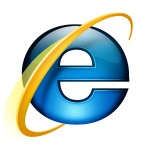Surprisingly, Microsoft Announces Cool Phone
While Apple’s iPhone is the leader in smartphones, there is competition from Google’s Android phones, RIM’s Blackberries, and Palm’s Pre. This week’s announcement of Windows Phone 7 Series at the Mobile World Conference in Barcelona should put Microsoft back in the competition.
While Microsoft has made phone software for over 13 years, the phones were never popular outside of business. The phones looked like slimmed down versions of Windows and were clunky. With Windows Phone 7, Microsoft is using the acclaimed user interface from their Zune music players and completely revamping the phones.
Expect to see phones running Windows Phone 7 around November 2010.
Note the first line of this video demo/promo. It says “A different kind of phone…” Reminds me a little of another company with small market share that asked people to “Think Different.”
For more videos, see Microsoft’s YouTube page on Windows Phone 7.




 I used to tell people that the newest Internet Explorer 8 was safe enough. But recent events have changed my mind. The Chinese attacks on Google over Christmas were perpetrated using a vulnerability that exists in all versions of Internet Explorer. Microsoft still hasn’t fixed this.
I used to tell people that the newest Internet Explorer 8 was safe enough. But recent events have changed my mind. The Chinese attacks on Google over Christmas were perpetrated using a vulnerability that exists in all versions of Internet Explorer. Microsoft still hasn’t fixed this.